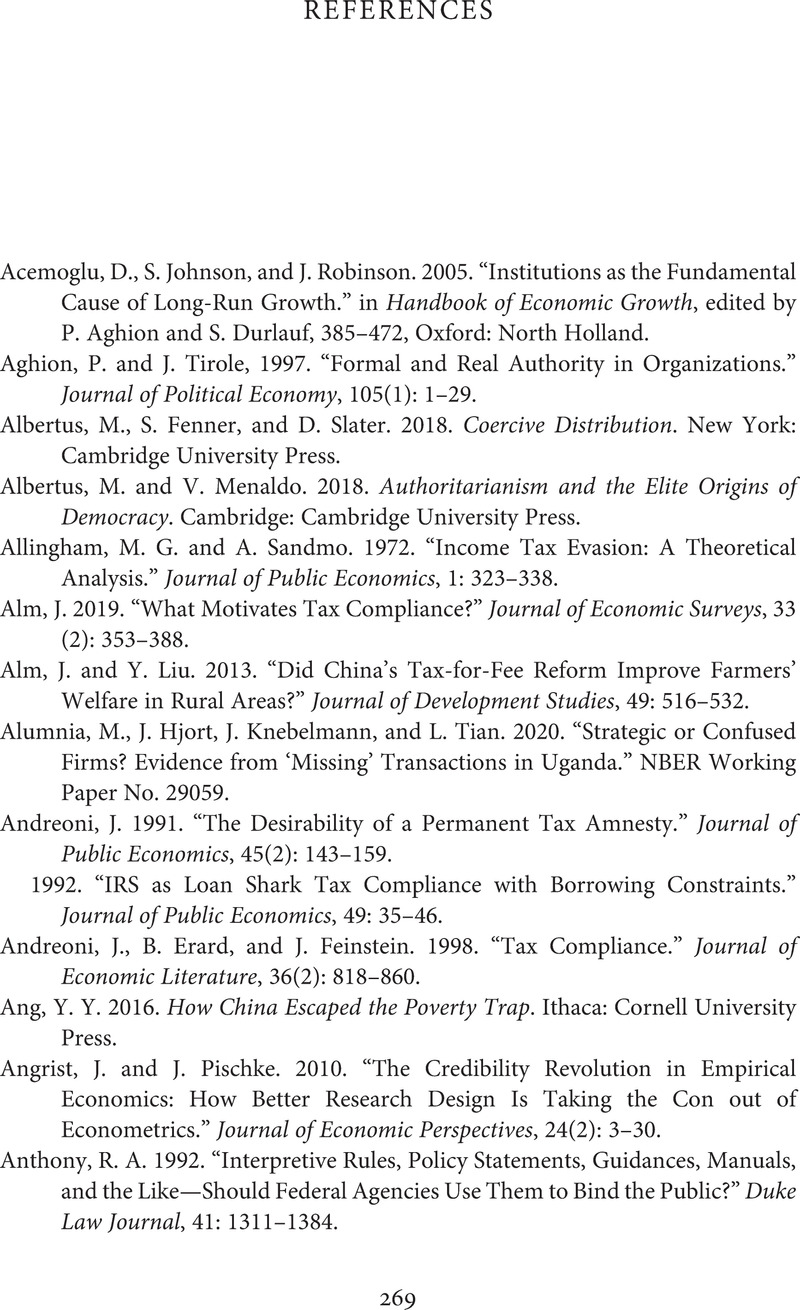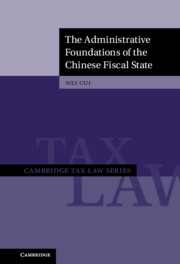Book contents
- The Administrative Foundations of the Chinese Fiscal State
- Cambridge Tax Law
- The Administrative Foundations of the Chinese Fiscal State
- Copyright page
- Dedication
- Contents
- Figures
- Tables
- Acknowledgments
- Abbreviations
- Introduction
- 1 The Forgotten Reform
- 2 What Is an Audit?
- 3 Atomistic Coercion
- 4 Returning Responsibilities to Taxpayers
- 5 Organizing Revenue
- 6 Policy Making without Information
- 7 The Rhetoric of Law
- 8 Varieties of State Capacity
- 9 Pivoting Away from the Rule of Law
- References
- Index
- References
References
Published online by Cambridge University Press: 24 March 2022
- The Administrative Foundations of the Chinese Fiscal State
- Cambridge Tax Law
- The Administrative Foundations of the Chinese Fiscal State
- Copyright page
- Dedication
- Contents
- Figures
- Tables
- Acknowledgments
- Abbreviations
- Introduction
- 1 The Forgotten Reform
- 2 What Is an Audit?
- 3 Atomistic Coercion
- 4 Returning Responsibilities to Taxpayers
- 5 Organizing Revenue
- 6 Policy Making without Information
- 7 The Rhetoric of Law
- 8 Varieties of State Capacity
- 9 Pivoting Away from the Rule of Law
- References
- Index
- References
Summary

- Type
- Chapter
- Information
- The Administrative Foundations of the Chinese Fiscal State , pp. 269 - 283Publisher: Cambridge University PressPrint publication year: 2022



